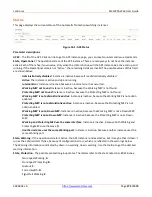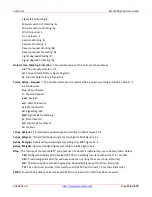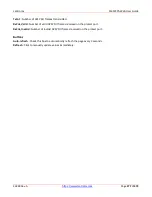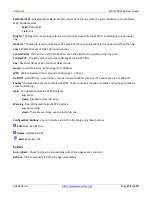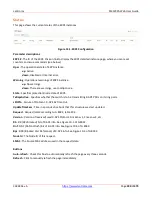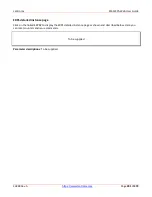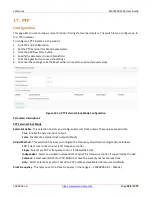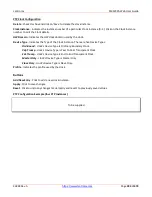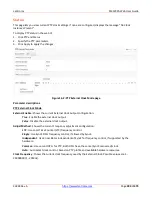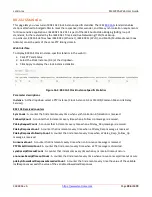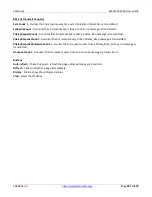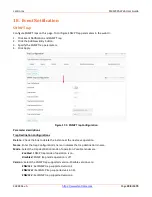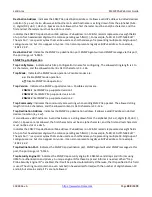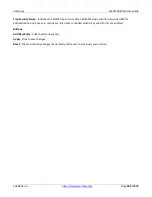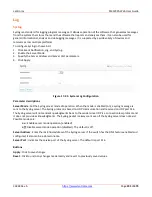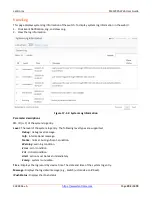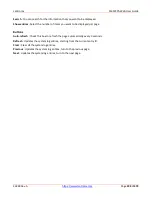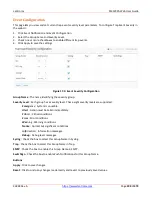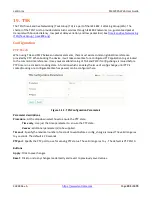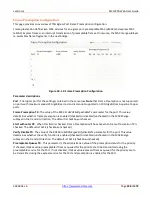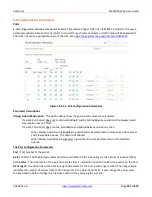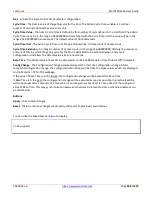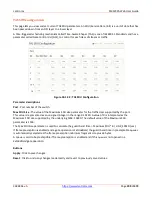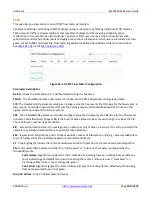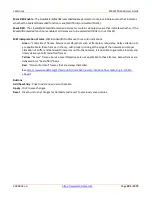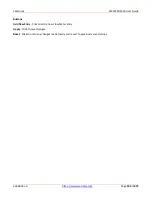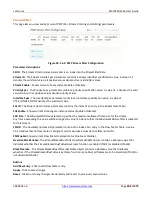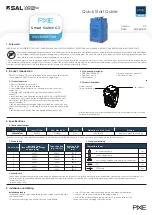
Lantronix
SM12XPA Web User Guide
33848 Rev. A
Page
289
of
473
Destination Address
: Indicates the SNMP trap destination address. It allows a valid IP address in dotted decimal
notation ('x.y.z.w'). It also allows a valid hostname. A valid hostname is a string drawn from the alphabet (A-Za-
z), digits (0-9), dot (.), dash (-). Spaces are not allowed, the first character must be an alpha character, and the
first and last characters must not be a dot or a dash.
Indicates the SNMP trap destination IPv6 address. IPv6 address is in 128-bit records represented as eight fields
of up to four hexadecimal digits with a colon separating each field (:). For example, 'fe80::215:c5ff:fe03:4dc7'.
The symbol '::' is a special syntax that can be used as a shorthand way of representing multiple 16-bit groups of
contiguous zeros; but it can appear only once. It can also represent a legally valid IPv4 address. For example,
'::192.1.2.34'.
Destination Port :
Indicates the SNMP trap destination port. SNMP Agent will send SNMP message via this port,
the port range is 1~65535.
SNMP Trap Configuration
Trap Config Name
: Indicates which trap Configuration's name for configuring. The allowed string length is 1 to
32 characters, and the allowed content is ASCII characters 33 - 126.
Trap Mode
: Indicates the SNMP mode operation. Possible modes are:
on
: Enable SNMP mode operation.
off
: Disable SNMP mode operation.
Trap Version
: Indicates the SNMP supported version. Possible versions are:
SNMPv1
: Set SNMP trap supported version 1.
SNMPv2c
:
Set SNMP trap supported version 2c.
SNMPv3
:
Set SNMP trap supported version 3.
Trap Community
: Indicates the community access string when sending SNMP trap packet. The allowed string
length is 0 to 63 characters, and the allowed content is ASCII characters 33 - 126.
Trap Destination Address
: Indicates the SNMP trap destination address. It allows a valid IP address in dotted
decimal notation ('x.y.z.w').
It also allows a valid hostname. A valid hostname is a string drawn from the alphabet (A-Za-z), digits (0-9), dot (.),
dash (-). Spaces are not allowed, the first character must be an alpha character, and the first and last characters
must not be a dot or a dash.
Indicates the SNMP trap destination IPv6 address. IPv6 address is in 128-bit records represented as eight fields
of up to four hexadecimal digits with a colon separating each field (:). For example, 'fe80::215:c5ff:fe03:4dc7'.
The symbol '::' is a special syntax that can be used as a shorthand way of representing multiple 16-bit groups of
contiguous zeros; but it can appear only once. It can also represent a legally valid IPv4 address. For example,
'::192.1.2.34'.
Trap Destination Port
: Indicates the SNMP trap destination port. SNMP Agent will send SNMP message via this
port, the port range is 1~65535.
Trap Security Engine ID
: Indicates the SNMP trap security engine ID. SNMPv3 sends traps and informs using
USM for authentication and privacy. A unique engine ID for these traps and informs is needed. When "Trap
Probe Security Engine ID" is enabled, the ID will be probed automatically. Otherwise, the ID specified in this field
is used. The string must contain an even number(in hexadecimal format) with the number of digits between 10
and 64, but all-zeros and all 'F's are not allowed.

